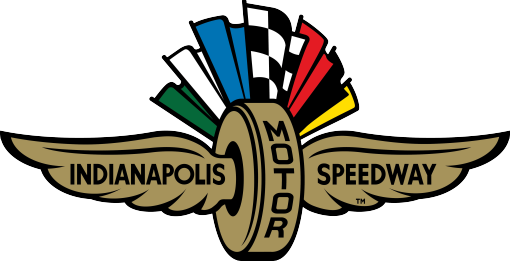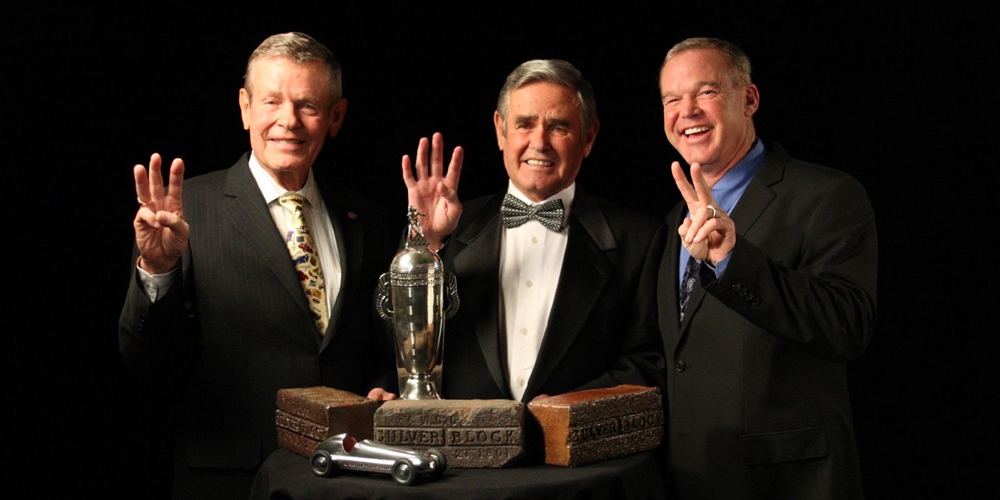Call it, if you will, The Unser Dynasty.
Between 1968 and 1994, a driver by the name of Unser won the Indianapolis 500 nine times. In fact, nearly one out of 11 of every Indianapolis 500 ever held has been won by a member of this amazing family from Albuquerque, New Mexico.
By way of explanation, there have been six different Unsers enjoying at least one "500" start, three of them being brothers (Jerry, Bobby and Al), each of whom were followed by one son (Johnny, Robby and Al Jr.), the trio of second-generation Unsers therefore being first cousin to each other.
The first of the clan to try his luck at "The Speedway" was actually a seventh Unser, "Uncle" Louis, a Pikes Peak Hill Climb specialist who was hampered by mechanical trouble in his effort to complete a "rookie" test in 1940. Although he returned several times as a crew member in the 1950s, he was the only one of the seven never able to earn at least one starting position as a driver.
Uncle Louis's nephew, Jerry Jr., was the first to take the green flag (1958), followed by Jerry's younger brother Bobby in 1963, and yet another brother, Al, in 1965. From 1963 until 2007 – a span of 44 years – there were only two years without at least one Unser in the lineup.
In 1968, Bobby was the first of the Unsers to win. Not only did Al duplicate that accomplishment just two years later, but he then successfully defended his title as only the fourth driver in history to have recorded a "500" win in consecutive years. That made it three Unser wins in four years, Mario Andretti's triumph in 1969 being the lone exception.
The score was evened at two apiece in 1975, when Bobby was declared the winner in an event brought to a halt by a driving rainstorm at 174 laps, but in 1978, Al went ahead again as a three-time winner. In what turned out to be his final "500" start, Bobby led the field home in 1981, giving the Unser brothers their sixth win in 14 runnings.
In one of the biggest surprises in "500" history, master strategist Al was able to come through the pack in 1987 with an older and somewhat underrated entry to join A. J. Foyt as only the second driver to have won the "500" for a fourth time.
By this time, there was another Unser on the scene, Al Unser Jr., having made his "500" debut in 1983. In 1992, "Little Al," as he was happy to be called, sprinted home ahead of Canadian Scott Goodyear in what continues to stand as the smallest margin of victory ever –.043 of a second. For the first time ever, the son of a former winner had also claimed a spot on the Borg-Warner Trophy, and two years later, "Junior" won again, thus giving the Unsers their ninth win.
Johnny, the son of the late Jerry, had five consecutive starts between 1996 and 2000, and Bobby's son, Robby, scored a fifth and an eighth in 1998 and 1999.
Here are a collection of various anecdotes and facts about the most successful family in Indianapolis 500 history:
Mom’s Chili
Among the more colorful characters in the history of the track were "Mom" and "Pop" Unser, the parents of Jerry, Al and Bobby, plus Jerry's twin, Louis J. Unser, whose driving career was stymied by a form of multiple sclerosis. Louis J. was to become one of racing's most respected engine builders. While Jerry, the elder, was a man of few words, his charismatic wife had a huge "stage presence" and gave the impression of having been a performer. She was, in fact, a classically trained pianist but had given up a potential career in order to raise a family. Mom Unser became legendary for her chili, a concoction which was rumored to be laced with tequila. Close to Race Day, she would serve several hundred people in the Garage Area parking lot, the proceeds raising substantial sums of money for various charities.
Jerry’s Legacy
Although Jerry, Jr., had only one "500" start, he did leave a very important lasting legacy. On only the second day of practice in 1959, he was involved in a single-car accident which resulted in some fire. While fire-retardant uniforms had been strongly recommended for some time, they were not yet mandatory, and because this was considered merely a "shakedown" run, Jerry had not thought it necessary to change out of the short-sleeved shirt he had worn to the track. The early impression was that he was not that seriously injured, but during the next two weeks, his condition worsened. He fought a losing battle with blood poisoning, and stunningly, on May 17, he passed away. From that point on, the rules were changed and the wearing of a fire-retardant uniform was no longer a decision made by the driver.
Like Father, Like Son
History was made in 1983, when 21-year-old Al Unser Jr. became the first driver ever to compete against his father in the same "500." And he made his presence known. He started fifth but ran into some delays along the way and was several laps behind as he prepared for a restart following a late-race caution. Directly in front of him were his father, who was leading the race, and Tom Sneva, a three-time runner-up who had not yet won. Upon display of the green, young Unser sprinted past both of them, but then almost immediately allowed his father to repass. Sneva, however, was a different situation. While the youngster was generally accused of "blocking," he was merely placing his car on the straights in such a fashion as to disturb the airflow to Sneva's car. Sneva was eventually able to pass both Unsers and go on to the win, but much of the post-race discussion centered around this "heads-up" kid from Albuquerque who looked like Huckleberry Finn.
The Sultan of Speed
Without question, Bobby Unser ranks as one of the greatest qualifiers of all time. Every inch of every lap was a 100 percent effort, and he would complete a run absolutely soaked in perspiration, having wrung everything possible out of the car. A two-time Indy 500 pole winner, he qualified for the front row nine times, and in 19 starts, he failed to rank among the 12 fastest overall only once. In 1972, the first year in which bolt-on rear wings were permitted, qualifying speeds skyrocketed. In 1971, Peter Revson had set a new single-lap record for Team McLaren at 179.354 mph. By the time 1972 qualifying was over, Bobby Unser's Gurney Eagle had exceeded that by an unbelievable 17 mph, topping out at an extraordinary 196.678 mph.
Al’s Unlikely Fourth
Few would ever have expected Al Unser to win the 1987 "500," but he did so in true storybook fashion. Beginning the month without a "ride," he was invited to join Rick Mears and Danny Sullivan on the Penske team after their teammate, Danny Ongais, was injured during practice. Because Mears and Sullivan had determined that the team's 1986 chassis were handling better than the '87s, a pair of crew members were dispatched to Reading, Pennsylvania, to retrieve for Al an '86 car that was on display in a hotel lobby. Amazingly, this was the combination which won. At the very moment Al took the checkered flag, he also broke the event's longest-standing major statistical record. He increased his career laps led record to 613, which moved him ahead of the late Ralph De Palma, who had led the category continuously since 1912. De Palma had added to his total several times and ended up in 1921 with 612. By the time Al retired, he had increased his total, as well, his record ending up at 644. With Bobby having led 440 laps and Al Jr., 110, the combined total for the three Unsers is 1,194.
Bobby Gears Up for Victory
A member of the Unser family figured into one of the Speedway's most dramatic moments ever when, in 1968, one of Andy Granatelli's controversial gas turbine-powered cars, driven by Joe Leonard, broke down while leading within sight of the finish. Into the lead for the final nine laps swept Bobby Unser, driving a turbocharged Offy-powered Eagle. His performance was truly remarkable considering that he had lost all but top gear early in the race. Excruciating amounts of time were lost on each of his last three stops as he would literally have to creep up to speed. And how he was able to do so without stalling was almost beyond anyone's comprehension.
"Little Al" In The Record books
By completing 161 laps before the rains came in 2007, Al Unser, Jr., moved around Mario Andretti and Gordon Johncock to rank third in terms of total laps completed during a "500" career. With 3,173 laps to his credit, only his father (4,356) and A. J. Foyt (4,909) had completed a greater number.
The Famous 1989 Duel
Al Unser Jr., who had elected not to pit during a late-race caution in the 1989 Indianapolis 500, was being hunted down by two-time Formula One champion Emerson Fittipaldi. Heading down the backstretch with one and a half laps to go, Unser moved to the inside as he prepared to lap some cars ahead of him. Suddenly, Fittipaldi darted left, as well, and drew alongside Unser going into Turn 3. The two cars touched, and Unser spun into the wall. Amazingly, Fittipaldi retained control and cruised to the win under caution. As the Pace Car-led field had rolled through Turn 3 on its way to the checkered flag, Fittipaldi was amazed to see "Little Al" standing at the side of the track and giving him the double thumbs-up. In spite of everything, Unser's 198 completed laps were still enough to net him second.
Bobby Spans Three Decades
Each of Bobby Unser's three wins―1968, 1975 and 1981―came during a different decade.
Always There
Of the 28 Indianapolis 500s held between 1967 and 1994, there were only nine in which an Unser failed to place within the first three finishers.
Two of a Kind
Quite surprisingly, in spite of there having been so many Unsers competing in the "500," there has never been a single year in which there were more than two starting against each other.
The One Award No Unser Received
In spite of six Unsers having competed in a "500," not one of them ever won the Rookie of the Year award.




